Serving 140 students in grades 6-11, South Carolina Science Academy ranks in the bottom 50% of all schools in South Carolina for overall test scores (math proficiency is bottom 50%, and reading proficiency is bottom 50%).
The percentage of students achieving proficiency in math was 20-24% (which was lower than the South Carolina state average of 45%). The percentage of students achieving proficiency in reading/language arts was 25-29% (which was lower than the South Carolina state average of 45%).
The student:teacher ratio of 13:1 was lower than the South Carolina state level of 14:1.
Minority enrollment was 79% of the student body (majority Black), which was higher than the South Carolina state average of 53% (majority Black).
School Overview
Grades Offered
Grades 6-11
Total Students
140 students
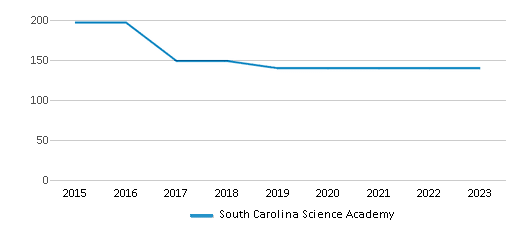
Gender %
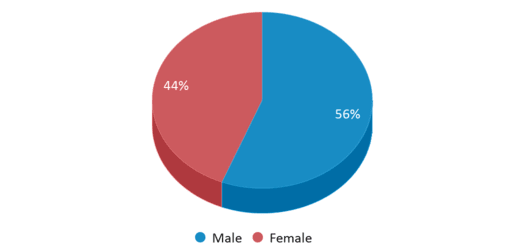
Total Classroom Teachers
11 teachers

Students by Grade
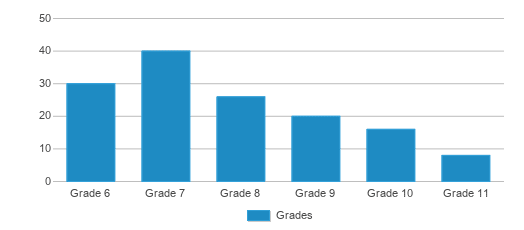
School Rankings
Math Test Scores (% Proficient)
(17-18)20-24%
45%
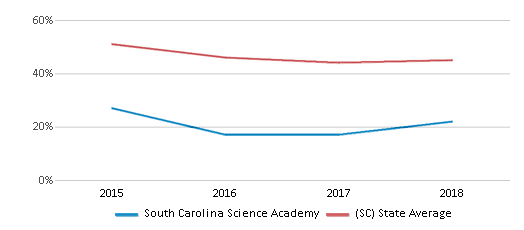
Reading/Language Arts Test Scores (% Proficient)
(17-18)25-29%
45%
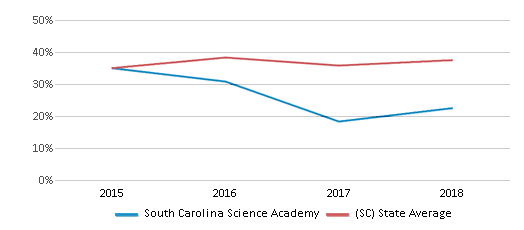
Student : Teacher Ratio
13:1
14:1
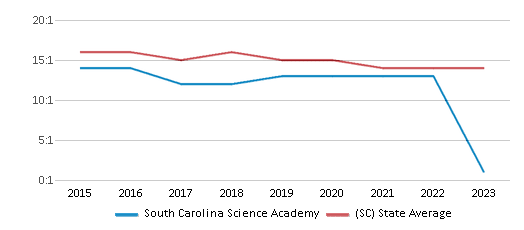
American Indian
n/a
n/a
Asian
1%
2%

Hispanic
4%
14%
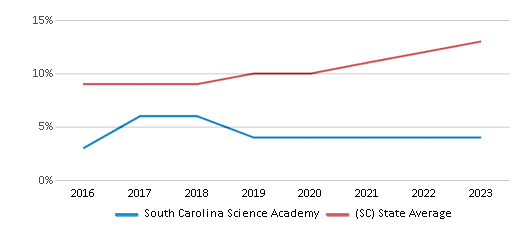
Black
71%
31%
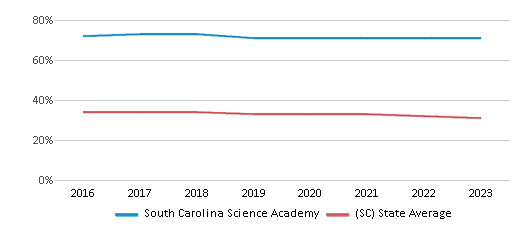
White
21%
47%
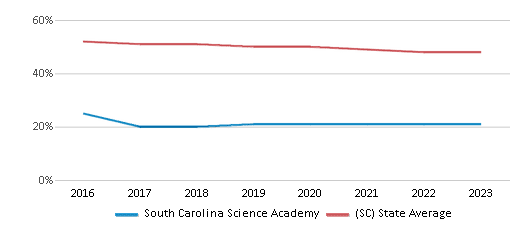
Hawaiian
n/a
n/a
Two or more races
3%
6%
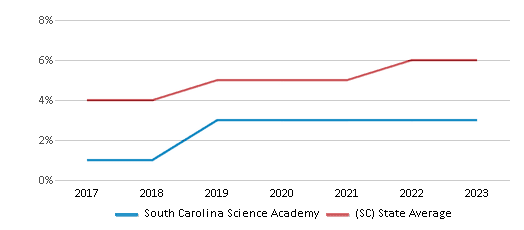
All Ethnic Groups
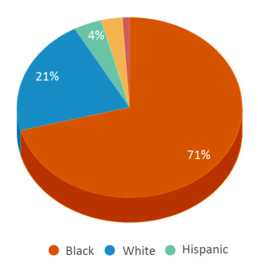
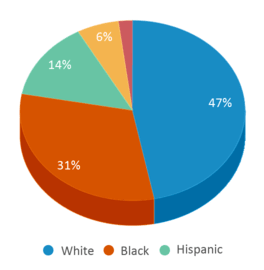

Eligible for Free Lunch
51%
67%
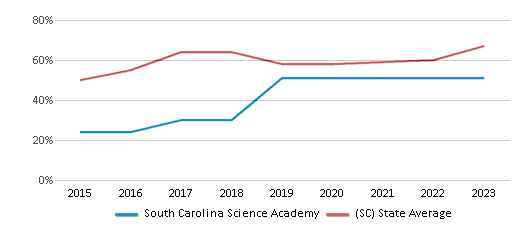
Eligible for Reduced Lunch (17-18)
5%
3%
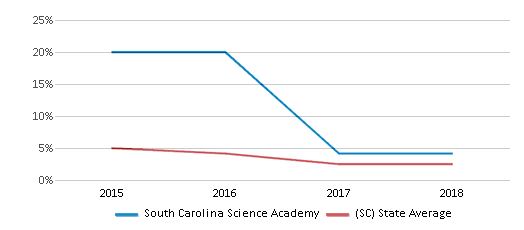
School Statewide Testing
School District Name
Extracurriculars
Total ExtracurricularsTotal Extra-curric.
13 extracurriculars
ExtracurricularsExtra-curric.
Club or Organization:
Adopt a Highway, Beta Club, Chorus, Dance, Gaming Club, Honor Society, Junior Beta Club, National Honor Society, Prom Committee, Red Ribbon Committee, Student Council
Arts and Music Programs:
Art Club, Choir
Adopt a Highway, Beta Club, Chorus, Dance, Gaming Club, Honor Society, Junior Beta Club, National Honor Society, Prom Committee, Red Ribbon Committee, Student Council
Arts and Music Programs:
Art Club, Choir
Source: National Center for Education Statistics (NCES), SC Dept. of Education
School Notes
- The South Carolina Science Academy (SCSA) is a publicly funded school and learning laboratory that focuses on science, technology, engineering, mathematics (STEM). This is an academically rigorous middle and high school that serves over 150 students from across the state of South Carolina in grades 6-12.SCSA`s vision to achieve academic excellence by providing a 21st century, STEM-centric education began with a passionate, committed group of educators, community leaders, and parents who believed in public school choice for all students.Observing the lack of focus on STEM education and project-based learning in the traditional school setting, SCSA`s leaders created a school that specifically addresses these issues. In creating SCSA the leaders focused on what a modern student would need to be successful in an ever-changing academic as well as employment landscape. In addition to receiving South Carolina public funding for initiatives, these trend-setters have garnered a half a million dollars to plan and implement the school. Additionally the SCSA has received a ten-year charter, has been approved the by the South Carolina Department of Education, and authorized by the South Carolina Public Charter School District in 2011. The inaugural year for the South Carolina Science Academy was 2014-2015.In accordance with the charter school model, an annually elected Board of Directors comprised of local business leaders, educators and parents will govern the school.MISSIONThe South Carolina Science Academy`s mission is to develop innovative leaders by providing to a diverse student body a world-class education designed with a science focus within the core academic courses through emphasizing science, technology, engineering and mathematics (STEM).We hope to be an integral part of your child`s educational future!To discuss our approach to STEM education further please emailInfo@scscienceacademy.org
Frequently Asked Questions
What percent of students have achieved state testing proficiency in math and reading?
20-24% of students have achieved math proficiency (compared to the 45% SC state average), while 25-29% of students have achieved reading proficiency (compared to the 45% SC state average).
How many students attend South Carolina Science Academy?
140 students attend South Carolina Science Academy.
What is the racial composition of the student body?
71% of South Carolina Science Academy students are Black, 21% of students are White, 4% of students are Hispanic, 3% of students are Two or more races, and 1% of students are Asian.
What is the student:teacher ratio of South Carolina Science Academy?
South Carolina Science Academy has a student ration of 13:1, which is lower than the South Carolina state average of 14:1.
What grades does South Carolina Science Academy offer ?
South Carolina Science Academy offers enrollment in grades 6-11
What school district is South Carolina Science Academy part of?
South Carolina Science Academy is part of South Carolina Public Charter School District.
Recent Articles

What Is A Charter School?
Explore the world of charter schools in this comprehensive guide. Learn about their history, how they operate, and the pros and cons of this educational innovation. Discover key facts about charter schools, including admission policies, demographics, and funding, as well as what to look for when considering a charter school for your child.

10 Reasons Why High School Sports Benefit Students
Discover the 10 compelling reasons why high school sports are beneficial for students. This comprehensive article explores how athletics enhance academic performance, foster personal growth, and develop crucial life skills. From improved fitness and time management to leadership development and community representation, learn why participating in high school sports can be a game-changer for students' overall success and well-being.

February 05, 2025
Understanding the U.S. Department of Education: Structure, Impact, and EvolutionWe explore how the Department of Education shapes American education, from its cabinet-level leadership to its impact on millions of students, written for general audiences seeking clarity on this vital institution.





